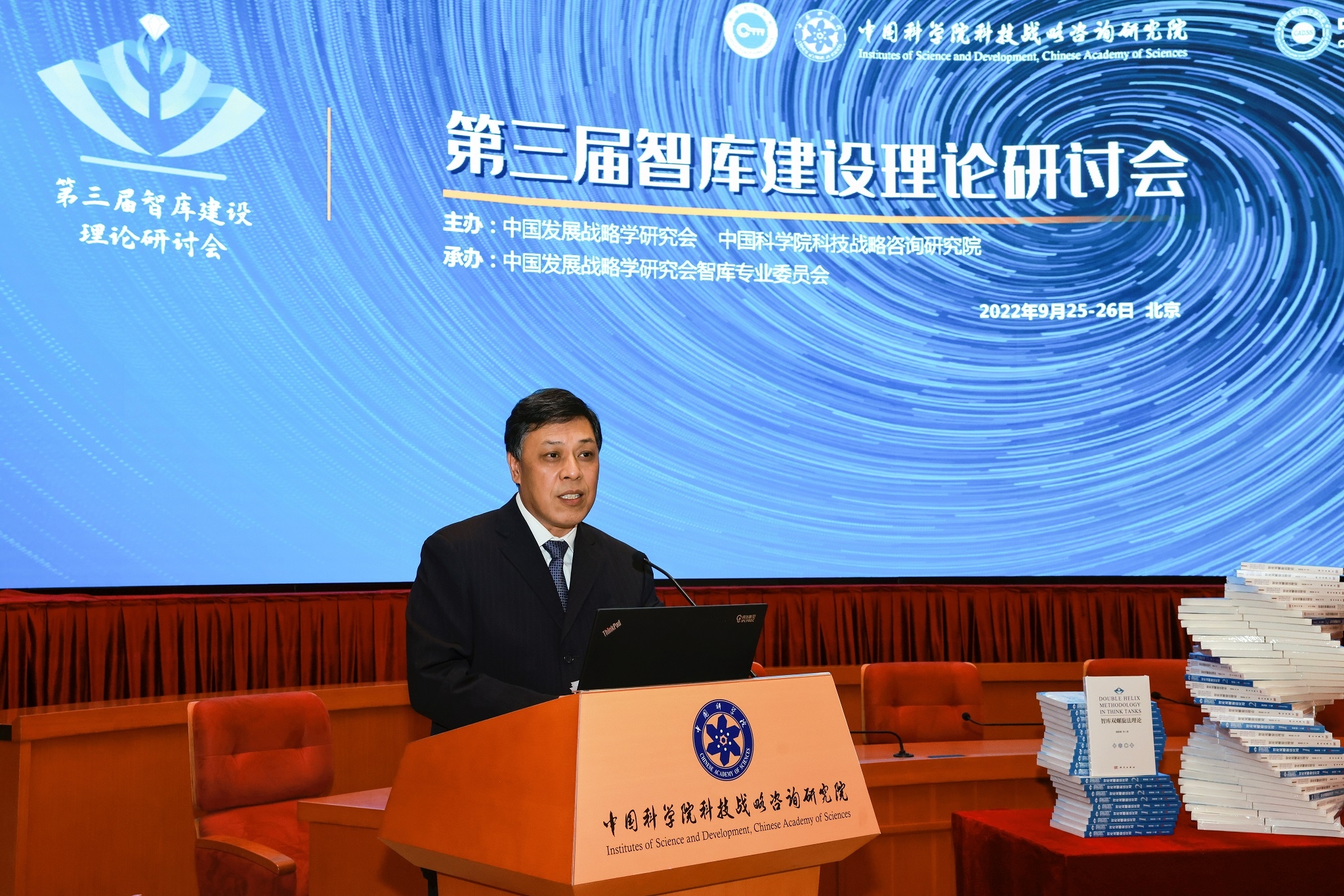
The Institutes of Science and Development of the Chinese Academy of Sciences (CASISD) has recently released two books on double helix methodology and its application in think tank research – Double Helix Methodology in Think Tanks and Applications of Double Helix Methodology in Think Tanks (Volumes I and II).
Like a strand of DNA, double helix methodology features two main interconnected components and consists of an integrated model concerned with data, information, intelligence, and solutions (DIIS) and one covering mechanisms, impact, policy, and solutions (MIPS) as formulated in the books. The combination of these aspects results in an effective, comprehensive process with a clear focus on creating sound, substantive policy and solving problems.
The Double Helix Methodology in Think Tanks proposes double helix methodology as a way of enhancing research and policy proposals. The book introduces a four-layer model involving mechanism analysis, impact analysis, policy analysis, and solutions; explains its advantages and explores ten key issues, such as the decomposition and analysis of think tank problem, the scenario analysis driven by think tank problem, the uncertainty analysis of think tank problem research, ect.

Books of Double Helix Methodology in Think Tanks arranged like a double helix. (Image by DONG Ning)
As for the Applications of Double Helix Methodology in Think Tanks (Volumes I and II), it features a collection of case studies and achievements in think tank research that utilize the methodology in accordance with the principle that theory guides practice and practice validates theory. The book discusses concepts and ideas related to think tanks, the philosophical underpinnings of double helix methodology, and the application of the methodology in frontier research related to fundamental topics and issues in areas such as social policy, economics and technology.
In addition, it summarizes laws and standardized procedures emerged and formulated in the course of the application of double helix methodology across various scales and types of think tank research and proposes a systematic method designed to improve the quality of results and better serve scientific decision-making.
PAN Jiaofeng, president of CASISD and chairman of the Chinese Association of Development Strategy Studies, said that think tank research is regarded as an undertaking embodying scientific thinking in its philosophy, orientation, logic, and processes when double helix methodology is applied.
The methodology proposed in the books requires a systematic study of research paradigms using evidence-based and solution-oriented scientific tools and methods adopted by think tanks, it helps to make random, sporadic, theoretical, academic, static research more systematic, stable, practical, empirical and dynamic, from a single subject to a multi-discipline, according to PAN.

PAN Jiaofeng delivering a speech about think tanks and double helix methodology. (Image by DONG Ning)
PAN Xuan
Institutes of Science and Development, Chinese Academy of Sciences
E-mail: panxuan@casisd.cn

86-10-68597521 (day)
86-10-68597289 (night)

86-10-68511095 (day)
86-10-68512458 (night)

cas_en@cas.cn

52 Sanlihe Rd., Xicheng District,
Beijing, China (100864)

